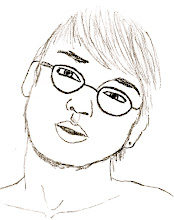625 BC
Technology
First cosmetic surgery, in India
Cloaca Maxima (main sewer) is built in Rome
Processional Way constructed in Babylon connecting the city’s temples with its royal palaces, inlaid with burned bricks and stone in bituminous mortar
Work begins on canal to connect Nile with Red Sea, but is not completed
Institutions
First Curia (senate-house) built in Rome
Teachings of Zarathustra dominate Persian religious though.
Babylonian buildings are faced with blue, yellow and white enameled tiles
The Book of Deuteronomy is compiled as one of the five books of Moses
Governance
Assyrian expansion into the region of Palestine (about 855-625 B.C.)
Early and middle orientalizing phase: proto-urban
Babylonians reassert control over Mesopotamia
Urbanization and development of social structure of rome
Naples is founded in Greek settlement of Neopolis
Draconian laws are established
Chief archon of Salamis frees people enslaved due to debts, repeals Draconian laws and removes death penalty except for homicide cases.
Commerce
Houses made of stone with tile roofs built in Rome
Paving of the forum
Goods are brought into Babylon by means of camels, riverboats and carts drawn by donkeys.
Corinthian tyrant Periander strips female nobility of gold jewelry and embroidery to finance government for decades
Demotic and cursive hieratic script replace hieratic writing in Egypt…used universally for business and literary purposes
625 AD
Technology
Slavs invent new plowing equipment that increases food production in northern and western Europe.
Chinese establish an imperial bureau for the manufacture of porcelain
Chinese Zhaozhou Bridge is the first open-spandrel stone segmental arch bridge
Vertical axis windmills
“The Opening of the Universe” written by Indian mathematician/astronomer Brahmagupta
Institutes
British conversion to Roman Catholicism by Pope Gregory I
Seven Deadly sins established: pride, envy, sloth, wrath, gluttony, lust and avarice
Shotoku Taishi code of Japan demands veneration of Buddha, Buddhist priests and Buddhist laws
Pantheon at Rome is consecrated as the Church of Santa Maria Rotunda
The prophet Mohammed begins to preach the new religion of Islam
Irish missionary Columban founded monastery in Italy
Pope Boniface V spreads Christianity through parts of England via missionaries
Islamic Sharia encourages men and women to obtain secular and religious educations
First English school is founded at Canterbury
Governance
Byzantine emperor Maurice and his five sons are executed…Maurice turned the failing Roman empire into the well-organized Byzantine Empire
China’s Sui emperor, Wendi, is killed by his son after a 23-year reign…he attacked hereditary privileges, reduced power of the military aristocracy and established civil service examinations
Persia resumes war with Byzantine and soon controls Armenia and Syria
Sinoization of Japan
Persia overpower Egypt
Mohammed’s forces take Mecca with troops that include women
Beginnings of Norway by Olaf Tratelia
Commerce
China’s Sui dynasty constructs a canal that links existing waterways to the new Chinese capital
Basra port is founded at head of the Persian Gulf
Sugar and manufacture of sugar begins in China
Japan enters terrible famine
answers.com



